Contrary to popular belief, betta fish should never be kept in those tiny – though adorable – fishbowls or uniquely shaped tanks that only hold a couple of gallons. And, yes, you need a good betta tank filter.
So, the question becomes, what does a betta need? Is a filter necessary at all? What kind of filter? Why do they need them anyway?
I’m not quite sure why these myths about bettas are so popular or how they originated – but it is critical for the health of your betta, to dis-spell both.
Betta fish should have properly treated, filtered water that removes the toxins and debris that can severely shorten a betta’s lifespan.
Without this filtration, not only will your betta have a shorter lifspance, but he or she will likely live a miserable life of illness you may not even be able to identify.
Below we’ll break down our reviews of the best filters for betta fish.
Best Betta tank Filter Quick-Find Table
| Image | Product | |||
|---|---|---|---|---|
EDITOR'S CHOICE 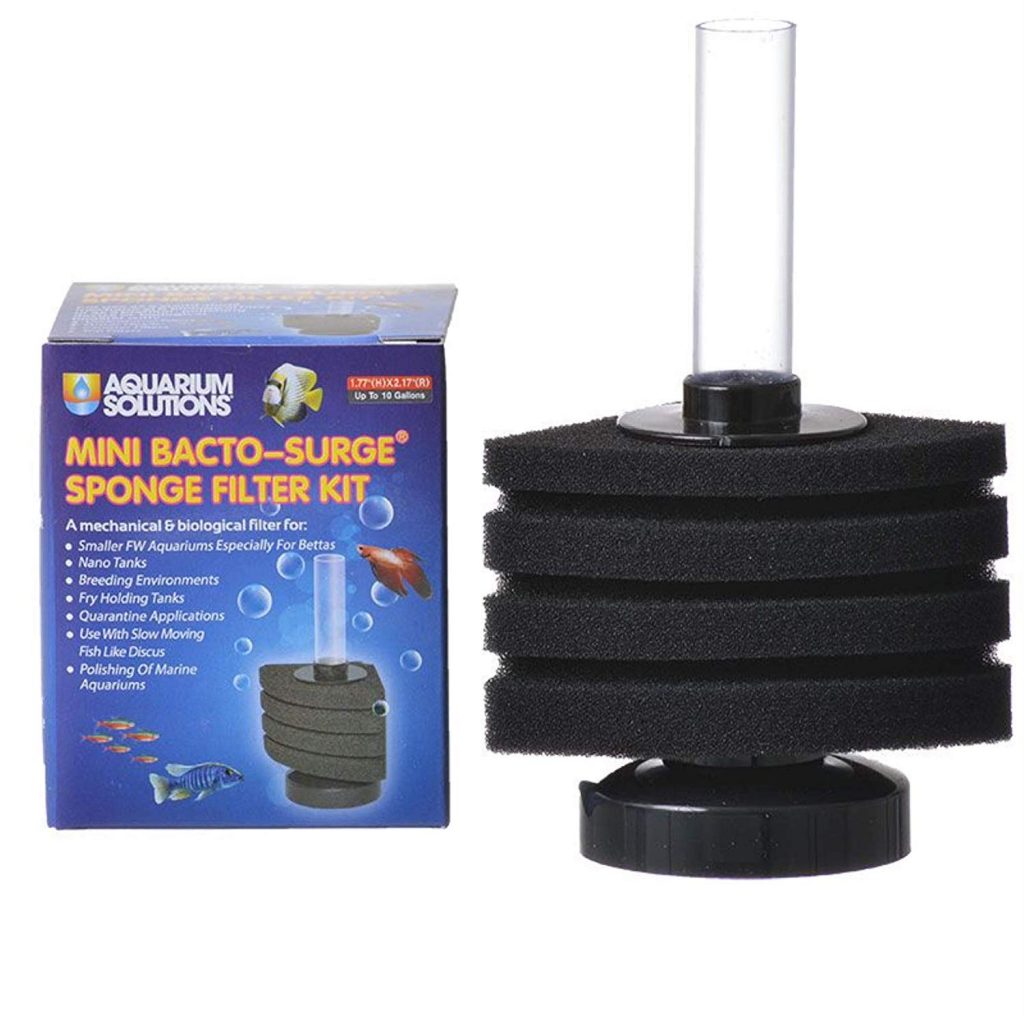 | EDITOR'S CHOICE |
|
| VIEW LATEST PRICE |
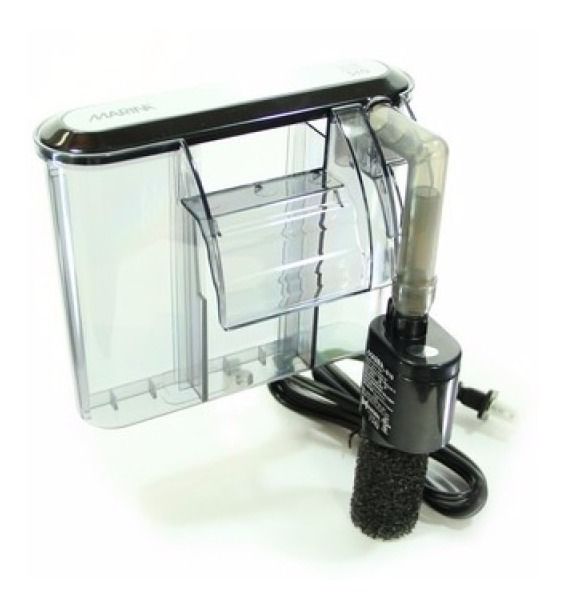 |
|
| VIEW LATEST PRICE | |
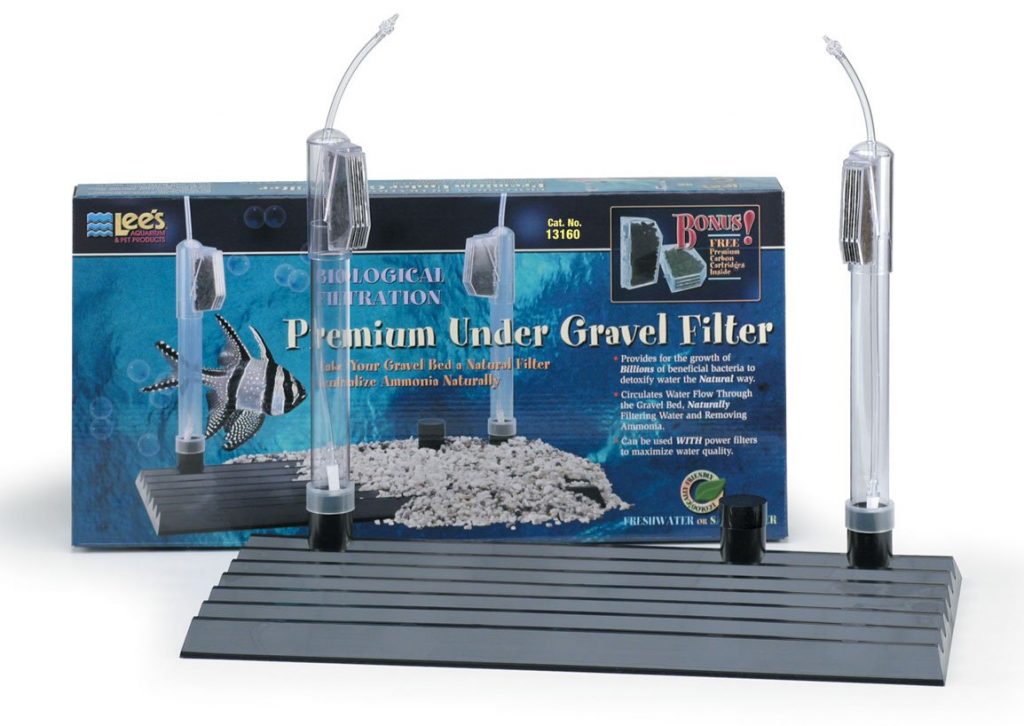 |
|
| VIEW LATEST PRICE | |
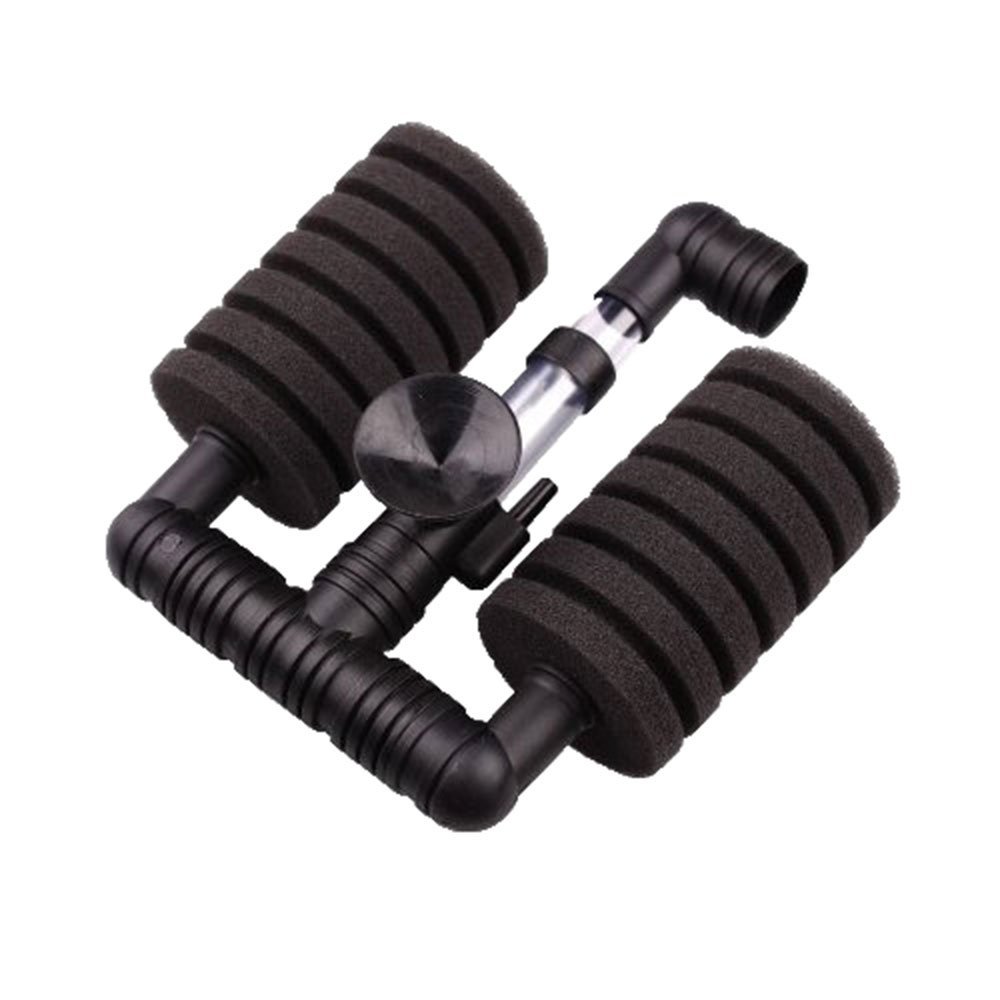 |
|
| VIEW LATEST PRICE |
Why Do You Need a Betta tank filter?
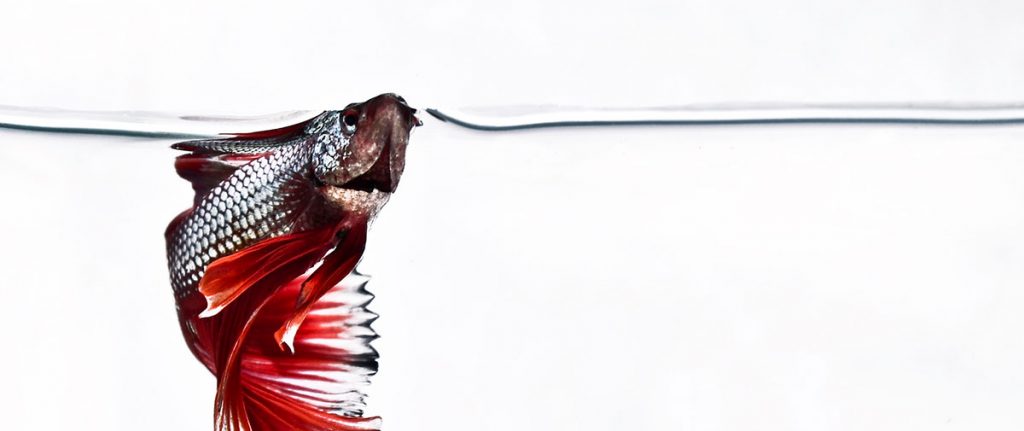
Beginner hobbyists tend to think that certain fish don’t need as much care simply because they’re low maintenance.
We hear all the time, “Goldfish are fine with a bowl and some simple flakes. They’re cold water fish, so who needs anything else?”
But both betta and goldfish, along with other pet fish, need to be kept in healthy, clean, pure aquarium water. Some need the added element of marine salt, but freshwater fish also need that pure, filtered water just as much.
A betta’s natural habitat looks like rice paddies and shallow, brackish bodies of water. This means they need slower moving water with less flow but just as much filtration (water purity).
These little Asian fish can actually gulp oxygen from the air – thus why they sometimes go to the waterline – instead of relying solely on their gills.
This is because the betta fish has a labyrinth organ, which allows this combination breathing.
This all means they have a high tolerance for low oxygenated water.
Because of all of this, bettas are easier to care for than some of the other tropical fish that are popular in aquariums. They require less equipment in their homes and that can make them easier to care for.
Some people do still opt for air stones and similar equipment to improve oxygenation in the water. They’re not required and not necessarily even recommended for betta, though.
Author note: I cannot emphasize this enough: Betta fish they still need the pure, filtered water that doesn’t contain any of the stuff that tap water has in it.
Healthy Betta Habitats
Let’s address a critical point here.
Betta fish need to be kept in at least 5 gallon tanks per each betta.
And each betta should be kept separately, especially males.
The other name for betta fish is Siamese Fighting Fish. There’s a good reason for that.
Author note: These fish are extremely territorial – even the sight of another betta can set these beautiful little guys off.
Types of Betta Tank Filters
Betta tank filters can come in a variety of types. You just have to determine which option is most useful to your fish keeping style.
The different kinds of filters work differently and may be appropriate for one size tank more so than another. They may also be more appropriate for a given fish keeping style more so than another.
Under Gravel Filters
This type of filtration lives up to its name: they rest under the gravel. Under gravel filters use biological filtration – i.e. good bacteria – to filter out unwanted crud in the aquarium water.
These are the easiest for many folks to care for and keep running properly and smoothly.
Author note: Since they slip under the gravel, under gravel filters are also good for added beneficial bacteria colony growth that’s easier to develop than many other options.
Hang on Back – HOB – Filters
Hang on back, or HOB, filters do as they say. The filter hangs on the back of the aquarium, semi-submersed, for a thorough filtration process of your aquarium water.
These are probably the most convenient, thorough filters for most people to use. They’re also less invasive with a reasonably low profile to prevent taking away from the aesthetics of most aquariums.
Top tip: Personally, these are my best recommendation for beginners and kids who’re learning the ropes on betta fish care. Their convenience make them “easier” to keep track of.
Sponge Filters
Sponge filters are great for getting debris from the aquarium water.
They’re the “first” level of filtration – mechanical filtration – but need to be paired with other filtration for a thorough, deep filtration for the healthiest aquarium environment possible.
Author Note: Biological filtration is critical for the health of your fish. If you do go with sponge filters, back them up with some kind of biological filtration as well.
Canister Filters
Canister filters are an external, inline filtration system that usually resides in the sump.
Submersible or Internal Filters
These filters are basically a drop-in option that filters the water inside the tank. They tend to have weighted bottoms to keep them from floating, though some folks use suction cuts to keep them in place.
Filtration Media Types
Beyond the type of filter, there are filtration types that play an important part in keeping your aquarium water pure and clean.
Mechanical Filtration
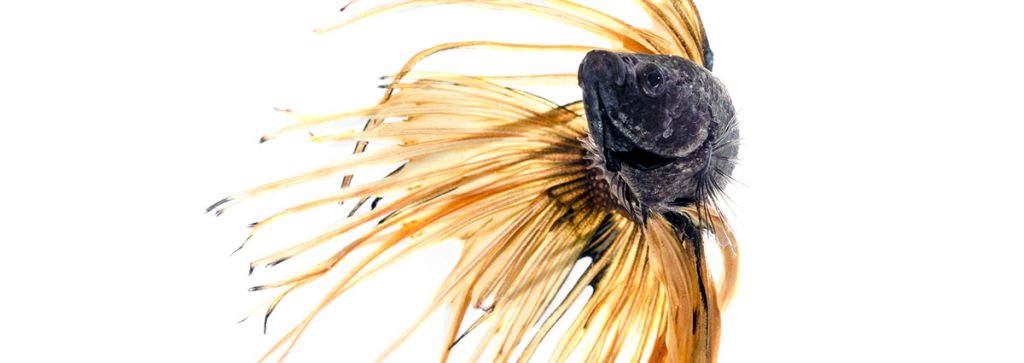
Mechanical filter media is made with porous, inert materials that remove particles from the water – like waste and sludge – capturing the crud in its fibers.
This media is sort of like a fish net.
The water passes through the mechanical filter media, removing debris through a straining process.
Mechanical media can be everything from coarse to very fine material, which effectively traps the particles and removes them from the water.
This kind of filter media comes in a range of forms, including sponges, pads, and blocks, made from a range of materials, including filter wool.
Mechanical filtration is required to remove dust, uneaten food, fish wastes, and dead plant pieces from the water.
Biological Filtration
The next phase of filtration is biological. Biological filtration media can kind of be thought of as like a house. Inside the house, healthy bacteria lives.
This beneficial bacteria kills off the bad bacteria that lives inside your aquarium. It also helps to kill off ammonia and eliminate fish waste, uneaten fish, et cetera.
Ammonia is deadly for your fish. As it builds up in the aquarium, the ammonia eating bacteria housed in the biological filter media.
This good bacteria reproduces and then consumes the ammonia, giving off nitrites. The nitrites also need to be eliminated, so the other kind of good bacteria takes care of it.
The two types of bacteria team up to maintain the healthy balance inside your aquarium environment.
Biological filter media comes in an even wider range of materials and types than mechanical filtration media.
Bio-balls, foam, ceramic and glass rings, pelleted carbon, plastic pieces, et cetera, can all be the “house” in which the good bacteria live.
Chemical Filtration
The final type of filter media, which may or may not be used in a betta tank, is chemical filtration.
This type of filtration is a specialized chemical additive that removes specific impurities from your fish tank water. Some target chlorine, chloramine, copper, odors, and other water impurities.
Carbon chemical media removes copper, chlorine, carbohydrates, and dissolved chlorine, along with other impurities. It also removed dis-colorants from the water, improving and increasing the clarity of the water.
Water Flow and Reducing Current
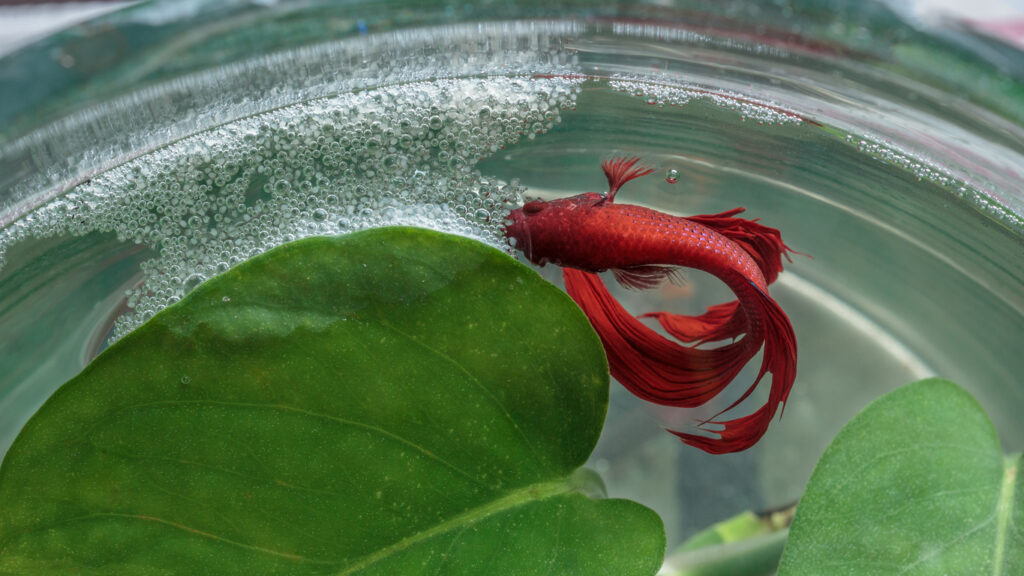
Top tip: Because bettas naturally live in a low flow environment, it’s important to get a low flow filter for betta tanks.
So, there are a few things to keep in mind for controlling the water flow and reducing the current.
1. Buy a Filter with Adjustable Flow Control
The first and easiest way to make sure you can reduce the current in your aquarium is through choosing an aquarium filter than has an adjustable flow control.
This will make it easier to guarantee the flow rate will be low enough that your betta’s life won’t be too disrupted.
2. Create a Flow Baffle
If you’re not able to buy a filter with the adjustable flow rate, you can help to disperse the flow of water by making yourself a baffle.
This can be anything that blocks or redirects the water coming from the filter. A simple tank divider kit, which includes a mesh screen and attached mechanisms, is one of the easiest ways to create this baffle.
Or, you can use a plastic soap dish or shower caddy that attaches with suction cups.
3. Block the Filter Intake
Use your in-tank décor to create a sort of block for your water flow.
This is kind of an oasis in the tank, which helps to protect your betta from a heavier flow than preferred.
How to Choose the Best Filter for Betta Fish
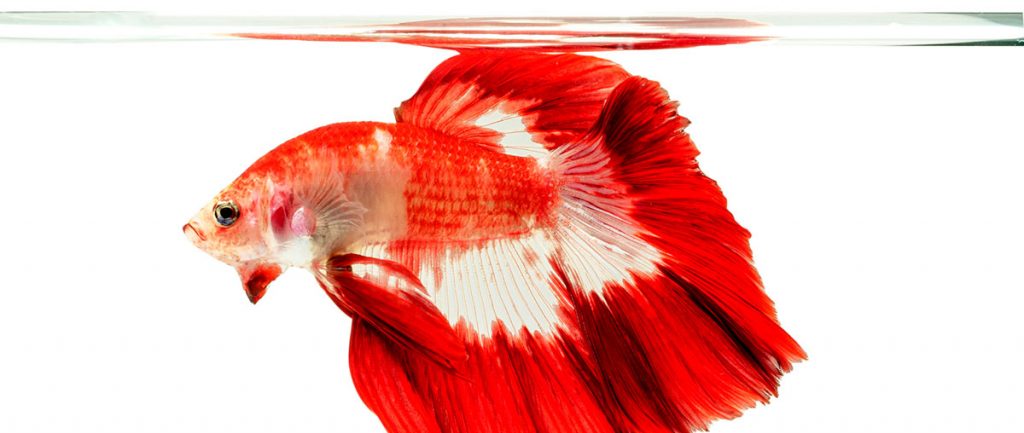
There’s no definitive “best filter for betta fish” in generic terms. There are, instead, multiple factors to consider for your specific betta tank setup.
You’ll need to consider things like aquarium size, number of fish/tank mates with your betta, output rate, plants you keep, durability, quality of manufacture, and how the filter will affect the aesthetics of your aquarium.
- Low flow output and current – for the comfort and low stress levels for your betta
- Easy to maintain/use – easy to remove cartridges, easy to replace, easy to clean set up
- Quality of performance – does it do the job? Does it actually keep your aquarium clean?
- Filter media types – at minimum both mechanical and biological are necessary for a healthy aquarium
- Reliability, durability, quality of manufacture – Does the filter perform consistently? Does it clog easily? Is it well made?
Reviews of the Best Filter for Betta Tanks
We looked for the above criteria to find the best filter for betta tanks. Each option listed below considers the quality, make, reputation of the brand name, and the options that make a given filter better than another for a betta tank.
Be sure to look at each filter in light of your own setup, energy and time you can devote to betta fish care, and things like your budget and the space in the aquarium.
Each aspect of your new betta tank filter choice is equally important as the other.
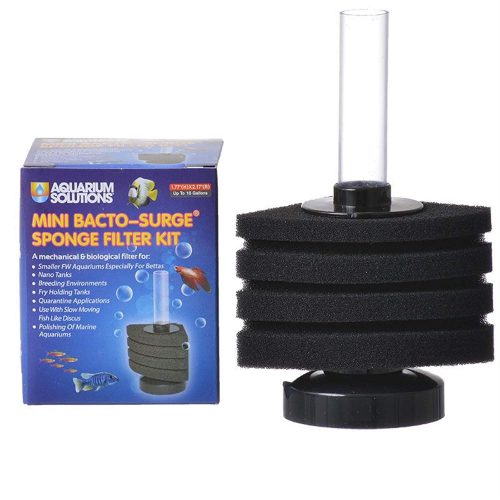
The Hikari Bacto-Surge high-density foam filter from Aquarium Solutions is a fantastic option for general betta tank filtration.
This is a super quiet option – which makes it great for offices, bedrooms, and any other spaces where you need a low volume profile, while doing all that it promises it will.
- Flow rate: Very low – almost zero
- Tank size: 5 to 15 gallons
- Media type: Biological filtration, foam
What We Loved
The first thing that we absolutely love about this particular filter for use in a betta tank is that it’s a filter that doesn’t actually pump any water.
That means it doesn’t create some kind of current that will disturb your betta. Instead, it produces a small stream of bubbles as it works.
It’s also an extremely quiet filter, which automatically makes it a winner for any aquarium, but especially for small fish tanks where hefty noises may bother your fish.
The filter has a weighted bottom, so it’s a great submersible – or internal – filter that stays put.
We also love that this really does the trick in cleaning up planted aquariums and murky tanks quickly.
What We Didn’t Love
The only thing we’ve really seen any potential problems on this for is that it’s a bit chunky for the sizes of aquariums its really most appropriate for.
It is extremely quiet and mostly un-intrusive for the fish, but it’s not the prettiest thing you’ll see in your aquarium.
Most fish keepers using it recommend surrounding it with plants and decorations to make it less obvious.
Our Verdict on the Hikari Bacto-Surge High-Density Foam Filter
The Hikati Bacto-Surge is a really great biological filter for your betta fish tank.
It’s uber quiet, very easy to use, works really well, and generally just does everything you’d want in a betta filter.
It’s even very low flow rate, which makes it perfect for your still water fish like bettas and goldfish who naturally live in slow flowing ponds and stagnant puddles.
The only drawback is that it isn’t the smallest option out there and some find it a bit of a nuisance. But if you surround it with plants and decorations, you probably won’t even notice it.
>> Tap Here to Read More Reviews and See Today’s Price on Amazon.com <<
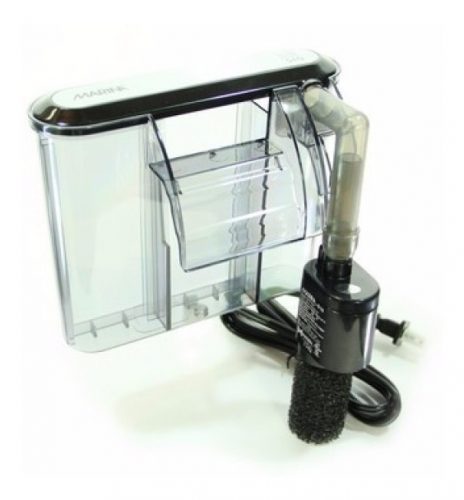
The Marina Slim S10 Power Filter is an extremely easy to maintain, easy to clean, self-priming HOB filter that comes from one of the most well-trusted brands on the market.
The filter is extremely compact and slim, making it ideal for small tanks – such as 5-gallon tanks – and tucks away neatly into the background, leaving the aesthetics of your betta tank practically untouched.
- Flow rate: Low to mederate, adjustable
- Tank size: Up to 10 gallons
- Media type: Biological, ceramic
What We Loved
The Marina Slim S10 is a really fantastic HOB filter for your betta tank for a number of reasons.
First off, it provides you with a decent flow rate that’s adjustable, meaning you can tweak it for the needs of your betta tank. It’s reasonably powerful, though, so you may need to use a baffle.
It’s super easy to clean and maintain, which, combined with the flow rate, means you’ll have an uber clean, safe aquarium for your beloved betta fish.
The filter also uses the more effective ceramic filtration media, which surpasses most sponge filters. This means your betta’s health will be even more improved.
Plus, the filter is super easy to install, use, and maintain throughout its life, which makes it a great option for beginner aquarists or life-long hobbyists alike.
What We Didn’t Love
The only potential drawback on the Marina Slim S10 is that it’s a bit pricier than some of the other options.
But because it’s a much higher quality filter media, that’s not much of a sacrifice.
It just may not be the most viable option for folks on a super tight budget.
Our Verdict on the Marina Slim S10
The Marina Slim S10 is honestly just about the best darn biological filter you can get for your betta tank.
The slim, sleek look of it makes it a more attractive option since it won’t take away from the aesthetic quality of your betta tank, plus it uses higher quality filtration media than most.
It’s a little pricier, but for anyone not on a super tight budget, that shouldn’t be too big of a deal, since it’s well worth the price.
>> Tap Here to Read More Reviews and See Today’s Price on Amazon.com <<
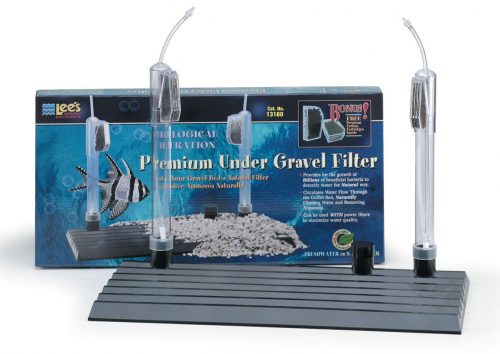
Lee’s 40/55 Premium Under Gravel Filter is a top-notch choice for anyone keeping betta in a larger aquarium – 40 gallons or larger.
They’re made of extremely high-quality plastic – built for durability and prevention of splitting and cracking – and last a long time.
- Flow rate: Low to moderate
- Tank size: 40 to 55 gallons
- Media type: Biological & chemical, active carbon
What We Loved
Lee’s Premium under gravel filter plates have eight port tubes, which is fantastic for versatility as you may need.
This filter also comes with four active carbon filter cartridges, which we love, because that means it’s taking care of both the biological filtration and chemical filtration needs for your betta tank.
We also love that thanks to those ports, you can use extra filter tubes to connect to external filters, which can prevent fish fry and other things from getting sucked up into the filter.
It’s especially great for anyone who keeps betta fish with any critters that scoops of sifts in the gravel and sand, because of the particular makeup of the plates and how they’re positioned in the tank.
We also love that the extra ports come with caps, to prevent other issues. Just be aware that once the caps are one, they’re pretty much on for good.
What We Didn’t Love
Most of the complaints we’ve seen are pretty limited to specific circumstances and preferences, but a few things we found that others don’t love include:
- Though the 4 carbon cartridges are great, not everybody wants them, and they add expense.
- You can’t really use an under-gravel filter as your only filtration system for your aquarium, so you’ll need to use this in tandem with some other filter.
- There are gaps between the plates, which can be annoying for some, though not a critical issue.
- Some people think the tubes are too long.
- Some people think the tubes are too short.
- Some folks found the carbon cartridges difficult to attach.
Our Verdict on the Lee’s 40/55 Premium Under Gravel Filter
If you keep a larger betta tank – 40+ gallons – you’ll find that Lee’s Premium under gravel filter is a great option for adding both biological and chemical filtration without a hassle.
The filter has eight ports for great versatility and ease of placement, is made of extremely high-quality plastic that won’t split or crack, comes with 4 carbon cartridges for filtration, and generally just works really well.
There are some qualities about it not everyone loves, but these are pretty much preferential things rather than actual issues. So, all-in-all, this is a great option for anyone with a larger betta fish tank.
>> Tap Here to Read More Reviews and See Today’s Price on Amazon.com <<
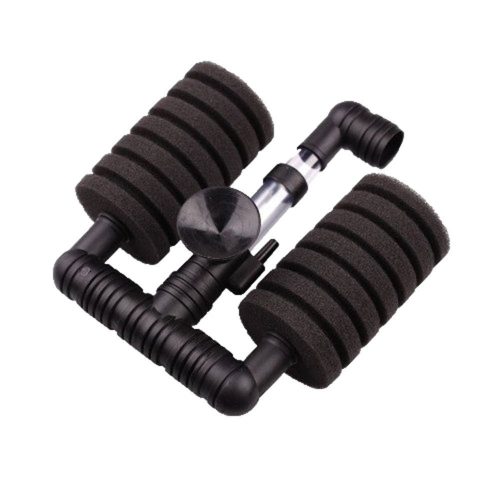
The XY-2831 Air Pump Sponge Filter is the best filter you’ll find for your 10-gallon betta tank.
It provides you with both mechanical and biological filtration – meaning less hassle and fewer filter devices.
It’s also safe for breeder tanks or small fish and is low-profile enough that it won’t mess with the general appearance of your aquarium’s look overall.
- Flow rate: Low to moderate, adjustable
- Tank size: Up to 10 gallons
- Media type: Biological, mechanical, foam/sponge
What We LoveD
First off, we love the price of this filter. It’s stupidly inexpensive, but still does all that it’s supposed to do for your betta tank. It’s really high-quality, especially when you keep the extremely budget-friendly price in mind.
The filter not only works as a biological and mechanical filter, but it also provides you with some aeration.
This is great for most aquariums, though you may need a baffle in the tank with your betta, and you will, of course need to buy the air pump to process the power properly.
This particular filter provides your beneficial bacteria a ton of space to collect on, which is fantastic. That means you can grow a ton of it, which in turn means it kills off the bad stuff more effectively and efficiently.
We also love that this is a really safe filter to use with very small fish – including fry – and sensitive critters. The filter won’t suck up anything too large, so your little pals are safe.
What We DIDn’t Love
We couldn’t really find much wrong with this filter. In fact, it’s practically perfect for a small aquarium.
Just be sure to thoroughly wash the suction cups before installing as some folks noted that they got a film off the suction cup the first time they installed.
Our Verdict on the XY-2831 Air Pump Sponge Filter
All in all, this is a truly fantastic filter for anyone to use in their betta tank. It’s uber budget-friendly – anyone can afford it! – and works well.
It’s easy to install, easy to maintain, and really does the trick with both biological and mechanical filtration. Just be sure to wash the suction cups thoroughly before installing, and you’ll be golden.
>> Tap Here to Read More Reviews and See Today’s Price on Amazon.com <<
Betta Filter FAQs
How often do you need to clean betta tank filters?
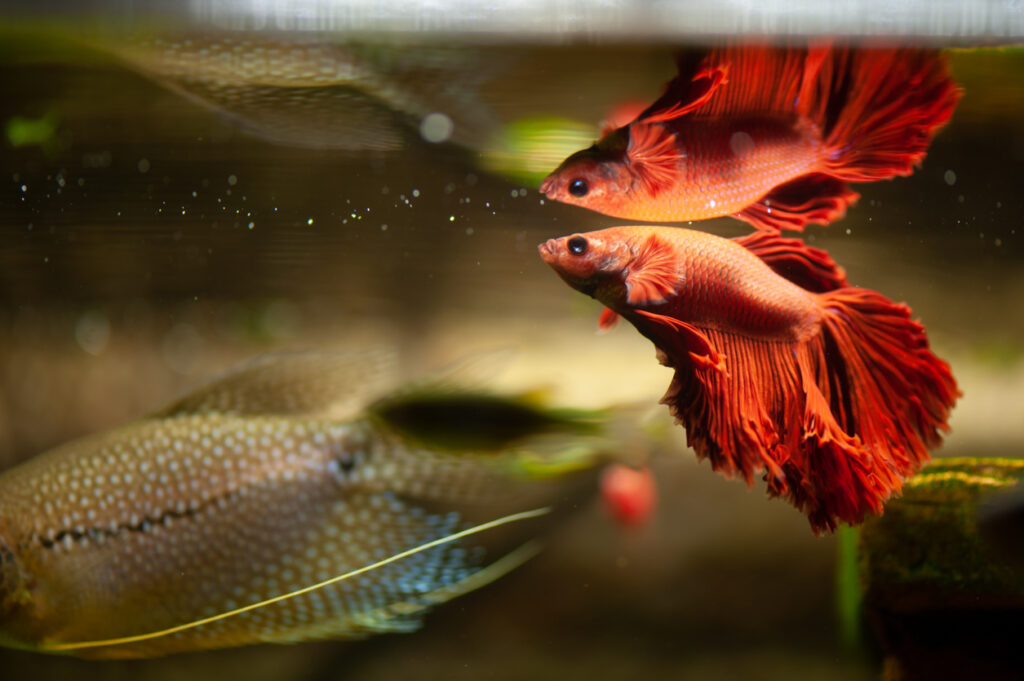
Most of the time, you want to clean your betta tank filter about every 10 days. You should never do this with tap water, hot water, or distilled water, however.
They should only be “cleaned” with the existing aquarium water to avoid killing off the beneficial bacteria you’ve got in there.
Are sponge filters any good?
Some sponge filters are good, some are not. It really depends on the brand and quality of the manufacture.
If you choose foam or sponge filters, only go with ones from companies you already know and trust – or that long-time aquarists do if you’re a newbie – or ones that have very high ratings from real-life users on sites like Amazon.
Do filters hurt bettas?
Generally speaking, filters do not hurt fish. The circumstances under which this may be different, however, is if you have delicate fins – like bettas – with a filter that’s too powerful for the environment.
Be sure to always size your filter to the number of gallons of water in your aquarium.
Can bettas live in a bowl without a filter?
Bettas should never live in a fishbowl. They need at least 5-gallons of water per betta.
And technically, bettas can live in small fish tanks without filters, but they are likely to merely be surviving if they do. Use filters to keep their homes safe, pure, and healthy for them for a long lifetime.
